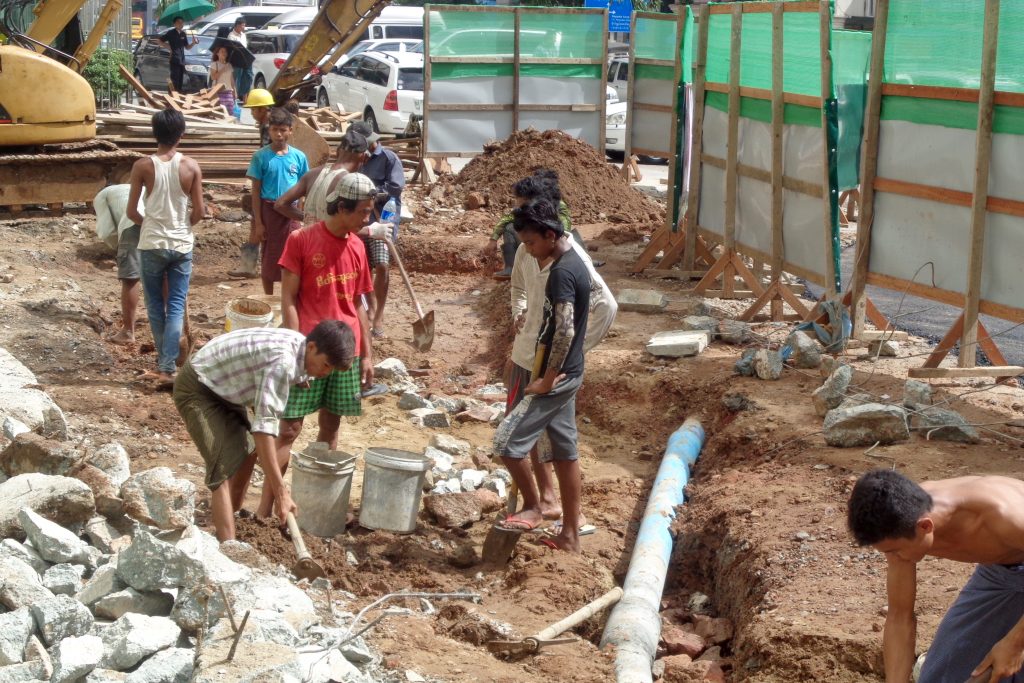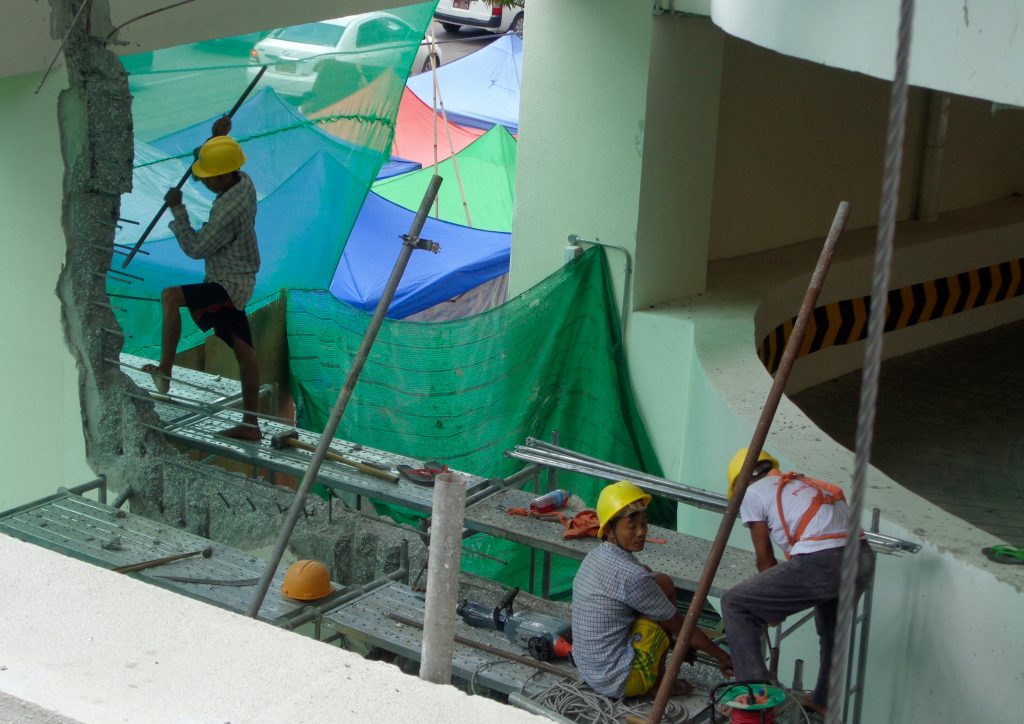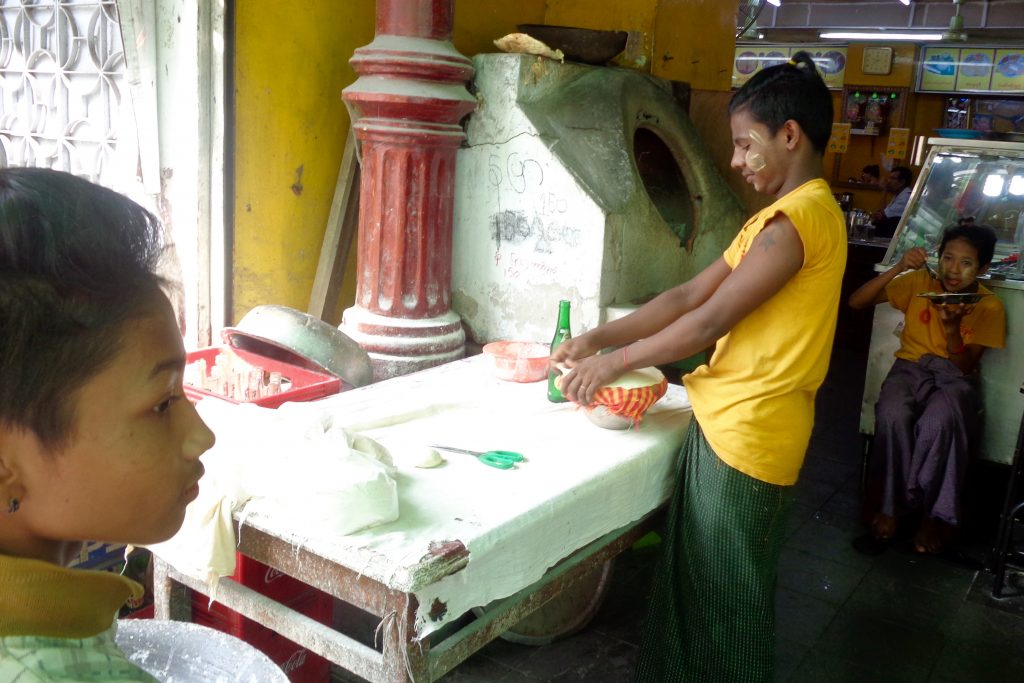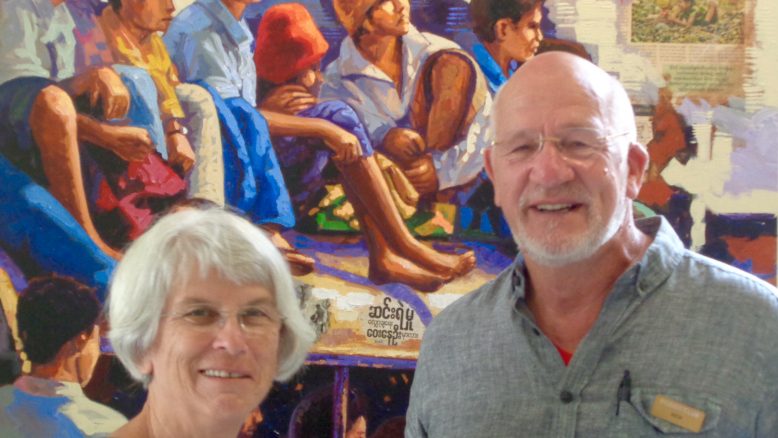Backed up against the painting of workers by Huang Hue at the River Gallery in Yangon we paused to consider their contribution here, their contribution at home, their way of shaping the world. The sledge hammer drives the breaking wedge from alternating sides into the sun calloused pavement. The rhythm of the swings interrupted by the resetting of the chilled wedge after each crumbling as another chip rolls away from the roadway. This is no miraculous regrading of a roadway. This is hard work, this road breaking by young men.

Grooming the road bed for another rainfall. A waterway to the river.

A few feet down the road a sledge hammer breaks the concrete pylons that support this car-park, opening walls and wallways for the light to stream through future windows. Light for the spaces. The floating rebar and unshored construction are landmarks of emerging standards: those rules rooted in common sense that have lost the balance between safe and sorry.

Between the dust mortar and rebar there is another image of work that rises from a tradition and knowledge transfer that emerges from a fermented understanding of flour and water. Years later this image captures the memory of my sixteen year old self kneading bread… Here the soda bottle doubles as rolling pin and the wood burning oven is moved inside. Daily bread delivered from hand to mouth.

The heart to hand energy that drives the working person to break roads, break walls and break pipelines so they can break bread is the way. This eating is much more than hand to mouth, it is the way that Heraclitus calls, “the way up and the way down are one, and the same.” A journey lived in the moment wherein what matters is daily bread. So much work that machines and systems do by us and for us may have lost the umbilical connection to food.
